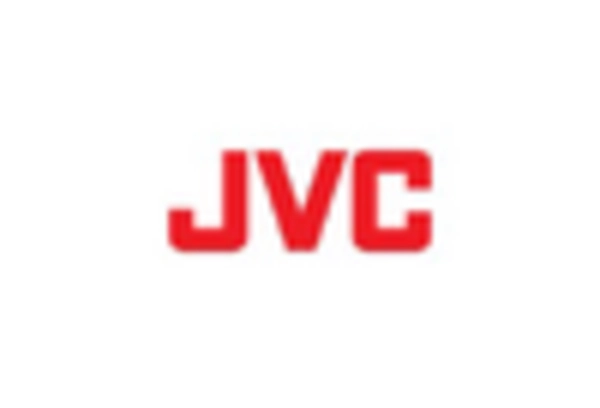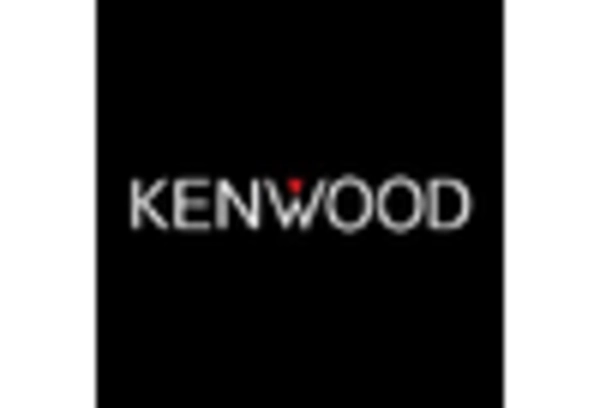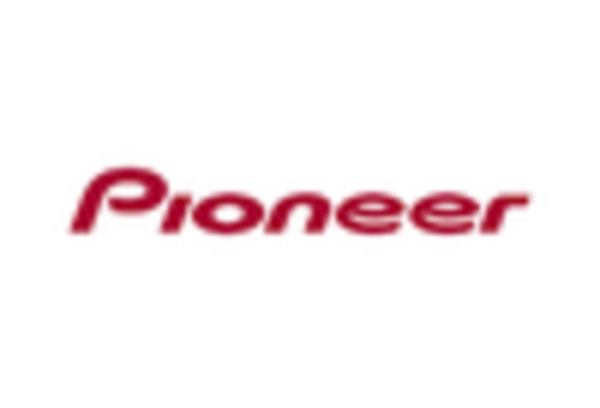Shift Towards Electric Vehicles
The transition towards electric vehicles (EVs) is reshaping the in car-audio-system market. As more consumers opt for EVs, manufacturers are adapting their audio systems to cater to the unique requirements of these vehicles. EVs often feature quieter cabins, which allows for a more immersive audio experience. This shift is supported by data indicating that EV sales in the US have increased by over 30% in the past year. Consequently, the in car-audio-system market is evolving to provide high-quality sound systems that complement the silent operation of electric vehicles, potentially leading to increased sales and innovation in audio technology.
Increased Focus on Safety Features
Safety remains a paramount concern for consumers, influencing the in car-audio-system market. Modern audio systems are increasingly integrated with safety features such as voice recognition and navigation assistance, allowing drivers to maintain focus on the road. This integration not only enhances user experience but also aligns with regulatory trends emphasizing driver safety. Data indicates that systems incorporating these features have seen a 25% increase in consumer preference. As safety becomes a critical factor in purchasing decisions, the in car-audio-system market is likely to adapt, leading to innovations that prioritize both audio quality and driver safety.
Rising Demand for Advanced Connectivity
The in car-audio-system market experiences a notable surge in demand for advanced connectivity features. Consumers increasingly seek systems that seamlessly integrate with smartphones and other devices, enabling functionalities such as hands-free calling and music streaming. This trend is reflected in the growing adoption of Bluetooth and Wi-Fi technologies, which enhance user experience. According to recent data, approximately 70% of new vehicles sold in the US are equipped with Bluetooth connectivity, indicating a strong preference for systems that offer such capabilities. As manufacturers respond to this demand, the in car-audio-system market is likely to witness significant growth, driven by the need for enhanced connectivity options.
Emergence of Subscription-Based Services
The in car-audio-system market is witnessing a shift towards subscription-based services, which offer consumers access to a wide range of audio content. This model allows users to enjoy music, podcasts, and audiobooks without the need for extensive storage in their vehicles. Recent surveys indicate that approximately 40% of consumers are interested in subscription services for in-car audio, suggesting a growing acceptance of this model. As more companies enter the market with subscription offerings, the in car-audio-system market may experience a transformation, with manufacturers focusing on compatibility and integration of these services into their systems.
Growing Interest in In-Car Entertainment
The in car-audio-system market is significantly influenced by the rising interest in in-car entertainment options. Consumers are increasingly looking for systems that offer not only audio playback but also video streaming and gaming capabilities. This trend is particularly prominent among younger demographics, who prioritize entertainment during commutes. Recent statistics suggest that nearly 60% of consumers are willing to pay extra for enhanced entertainment features in their vehicles. As a result, manufacturers are likely to invest in developing multifunctional audio systems that cater to this demand, thereby driving growth in the in car-audio-system market.

















Leave a Comment